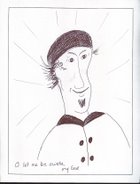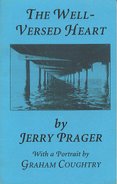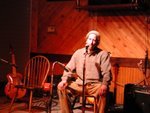The Swan entered my awareness rising from the inner harbour near Molly Brant’s land: the deep thwup thwup thwup of its massive wings reverberating with the thrums of car, truck and motorcycle tires across the iron-grating of The Singing Bridge spanning the narrows where Cataraqui currents cross to the limestone ridge of Olympian Fort Henry where they enter the St. Lawrence River, a height from which lightning bolts once entered Leda, giving life to her offspring with Zeus, the jolt of imbalanced power romanticized by painters as love and as rape by others: forty or more such swans now on the inner harbour: some of passing for human, some passing for swans, some mixedup confusionists, others balanced between clarities of transcendent conception and the consequences of inescapable attraction, thunder storm scales of aftermath awareness becoming stillness.
The Trumpeters are now the life of the Inner Harbour party: they, the beaver, the muskrat and the sunning turtles that climb out of shallow island-worlds, are warmed into equations seemingly solved by the young, Great Blue Heron stalking frogs and fish along the shoreline to an audience of human observers.
Further out, a single Caspian Tern dives, head down, bright-beaked, folded wings framing it, shallow-fork tail-feather shifts altering the angle of split-second plunge. Successful or not, it gathers wind to climb back out of the water, rising then gliding, scanning for subsurface meals, wind and chance defining its hunt.
The reviving watercourse is Molly Brant’s dream coming to life as a vision of the planet’s atmosphere powered by ions mutating eons out of our breathing space-rock to heart beats of spiritus sapiens. The niche of our species is the niche of our divinity, a niche of an aspirational Earth breathing its own existence.
Mo and I first arrived last fall, moved into Kingston: walked Belle Park as finches flew about us among the vine-grappled oaks out by the Barriefield narrows; happy to have us in the woods of their flight through the vines pulling down mature trees, they flitted around us and limbs broken by wind-twist, landing on branches to dart off into the fractured and staggered hardwoods, bursting into the sun and back into shadows, turning us around while following their antics, catching views of the channel beyond: quick as ripples, they trace wind over water as a pair of Canada Geese slip back the way we came, the sparkled waves flickering.
On Belle Island last October, the upriver sailboat anchored the foreground of the causeway beds for the structural steel and concrete car-bridge spans-to-be, a gap reaching across the open channel from either side.
The work, re-started with spring, was that of ironworkers’ seen from the sandy shore. We studied the collapsed boathouse wharves across the nearer way, their rustic integrity fallen inward, sunken; mostly whole, supporting the view of certain-death by redevelopment, by the vines of power drawn like decision-making in warm sand with a naked foot washed by a wave: the weight of our bodies indenting heels, arches, pads and toes, a construction-free afternoon considering a quiet drift into the evening of our species. Waves and airs linger, serene: effervescence heals as we walk poplar stands through inland meadows, swans in coves either side of the widening point. The sussurations of long grasses stirring river breeze before our subsequent breaths.
Making for the marsh corner path, our route parallels the beaver ponds alongside the chain-link fence up the rising ground to where the creek ridge limestone banks fall towards us from the culvert at the closed road to Rideau St. The curtain-spread of cut links drape off pipe rails opening into old tannery paths now in the care of the Earth, the woods beyond filled with garbage dumped by those incapable of sorting the costs of bags emptied during walk-throughs among the abandoned campsites of the winter dispersed homeless; heaps strewn among the concrete-jutting, twisted iron-rods of the old foundations and red clay ruins of the tannin bath; dumps among grape vine tangles enroute through the blackened remains of trees set fire-to by mental health poor squatters with drug and alcohol problems, living on lousy food, fending for themselves for and against one another on land in need of its own healing, their only witnesses the beaver, squirrels, chipmunks and the wary deer long since fled.
Human paces have been slowed by variants-of-planetary-interest in whether to keep our species, or kill us off along with everything else in our niche; replace us with new symbiotic creatures, in our case, with ones possessing more genuine powers of common purpose than our own.
The twisting similarities and dissimilarities between what people create and what exists, play out of these toxic places: the turtles, now resting from caring for the chemical stew of the floor of the Inner Harbour, commune with the sun on the ribs and centre beams of the rusting hull of the disintegrated boat off the Cotton Mill; slip with dusk back into the mud of their mysteries: the offspring of divinities in constant metamorphosis.



